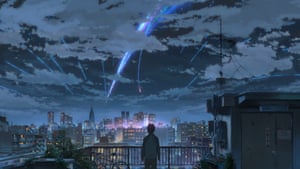This is part of a series of posts I have creatively titled "Favourites" where I write about an unashamedly personal selection of my favourite films.
In this epic art house saga, director Richard Linklater creates an unerringly honest study of the complexity of familial relationships, revelling in the beauty of the small moments, Boyhood is a love letter to the minutiae that ultimately constitute life. The film chronicles the life of Mason, played by Ellar Coltrane, from age 5 to 18. We see him transform completely, both physically and emotionally; his fresh faced open features become more angular, and an inquisitive wide-eyed charm becomes more reserved and introspective. Linklater renders this transformation with excruciating rigour, capturing its intricacies with characteristic delicacy and affection.
Despite the considerable magnitude of the project, Linklater approaches it with the relaxed uncomplicated style we've come to expect, treating every scene with uncluttered tenderness. Transitions from one age to another are handled extremely subtly, so much so that the passage of time seems to become insignificant. Much in the same way that one barely notices the change in a person you are very close to, Boyhood shows its characters growth in such small increments that the overall transformation is hard to perceive during the film. Looking back, the whole experience is blurred into a tapestry of random moments that come together to form an impression of what happened; we lose the fine detail, but it is the impression that matters.
Boyhood is a film of a scale never before seen in Linklater's work, however, it contains themes which he has visited in previous films. The universal magic of coming of age is explored in a manner similar to Dazed and Confused; characters from both films muddle their way through rites of passage in touching fashion and one can see a lot of Mitch and Randy in Mason's laid-back approach to rebellion. Boyhood also continues on from the Before trilogy with a fascination with the ways in which relationships evolve over time. In both cases, we see characters develop, observing how their changing identities affect the dynamics between them.
It is hard not to admire the film's extraordinarily dedicated execution of what is a relatively simple concept. As a result of the uncompromising realisation of this idea, the performances of the actors are imbued with a more profound meaning as - in many cases - the natural ageing of an actor aptly reflects their change in the film. This is perhaps seen most clearly in Mason's father, played by Ethan Hawke. At the start of the film he is lean and animated - his sharp features betraying an unreliable volatility - by the end he has mellowed in every sense, settling into a more responsible paternal role.
The life which we we are shown is delightfully ordinary; despite what would not be seen as a traditional upbringing with some low points, there is no melodrama. Instead, Linklater portrays these moments with a steadfast realism that makes them all the more emotionally affecting. In what I found the most touching moment of the film, we see Mason's mother question her life as Mason packs to go to college. She feels as if life has passed her by, a series of landmarks that don't amount to enough, "I just though there would be more" she says wistfully. However, this film shows that life isn't about the landmark moments, instead celebrating the accumulation of trivia that life comprises of.
Boyhood is a film that doesn't try to answer any questions about what life means, it simply observes our muddled existence in all its glorious confusion, marvelling at its simple yet enigmatic beauty. When Mason questions his father "What's the point of it?", he responds in a manner that sums up the film's approach rather aptly, "Everything? What's the point of it? I mean I sure as shit don't know, neither does anybody else, we're all just winging it, the good news is you're feeling stuff".
























